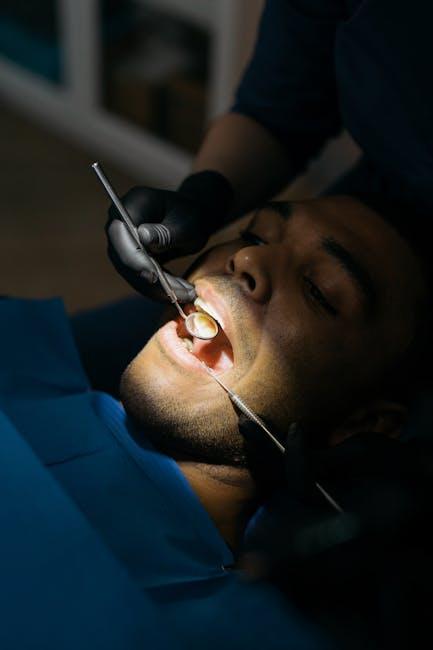
Non-Traumatic Dental Presentations at Accident and Emergency Departments in the UK: A Systematic Review
Accident and Emergency (A&E) departments in the UK frequently encounter patients presenting with dental complaints. While traumatic dental injuries often require urgent intervention, a significant number of visits involve non-traumatic dental presentations, which pose unique challenges for emergency healthcare services. This article dives into a systematic review published by Nature, focusing on the epidemiology, management, and implications of non-traumatic dental issues at UK A&E departments.
Understanding Non-Traumatic Dental Presentations
Non-traumatic dental presentations include dental conditions not caused by physical injuries such as accidents or violence. Common ailments typically range from dental infections to pulpitis and toothache caused by underlying chronic dental problems. Understanding these patterns is crucial for improving patient outcomes and reducing A&E burden.
Common Types of Non-Traumatic Dental Presentations
- Dental Abscesses: Painful, localized infections often associated with swelling and systemic symptoms.
- Acute Pulpitis: Inflammation of the dental pulp causing severe tooth pain.
- Pericoronitis: Infection and inflammation around partially erupted wisdom teeth.
- Periodontal Infections: Infections affecting gums and supporting structures.
- Toothache without infection: Presented as non-specific pain requiring diagnostic investigation.
Why Do Patients Visit A&E for Non-Traumatic Dental Issues?
The decision to seek emergency care for dental problems often stems from various barriers in accessing routine dental treatment in the UK. These include:
- Limited NHS dental appointment availability
- Financial constraints for private dental care
- Urgency due to severe pain or swelling
- Lack of awareness about appropriate dental services
As a result, many patients turn to A&E departments for immediate relief, although these departments typically lack specialized dental practitioners.
A Systematic Review: Key Findings from Nature
The systematic review published in Nature compiled data from multiple UK studies evaluating the characteristics of non-traumatic dental attendances at A&E departments. Some core insights included:
| Aspect | Summary |
|---|---|
| Proportion of Dental Complaints | Approximately 1-3% of all A&E attendances were dental-related; majority were non-traumatic |
| Demographics | Predominantly young adults (18-35 years), slight male predominance |
| Common Presenting Complaints | Toothache, dental infections, swelling, and abscesses |
| Treatment Provided | Symptom relief with analgesics and antibiotics; referral to dental services for follow-up |
| Challenges Identified | Inadequate dental resources in A&E; frequent re-attendances; strain on emergency healthcare services |
Implications for UK Healthcare and Dental Services
The repeated presentation of non-traumatic dental complaints in A&E highlights significant gaps in dental care accessibility and integration within emergency medicine:
- Resource Burden: Staff often ill-equipped to handle complex dental infections, leading to suboptimal care.
- Inappropriate Use of Antibiotics: Overprescribing to temporize infections due to lack of dental intervention risks antibiotic resistance.
- Patient Experience: Patients receive temporary rather than definitive treatments, leading to return visits and prolonged discomfort.
Practical Tips for Managing Non-Traumatic Dental Presentations in A&E
While comprehensive dental care remains outside A&E scope, frontline clinicians can adopt practical approaches to enhance patient care:
- Conduct Thorough History & Examination: Detailed dental history helps distinguish infection severity and urgency for referral.
- Use Symptom Relief Judiciously: Provide appropriate analgesics tailored to pain severity.
- Start Antibiotics When Absolutely Necessary: Reserve antibiotics for spreading infections or systemic involvement in line with guidelines.
- Facilitate Prompt Dental Referral: Where possible, collaborate with urgent dental care centers or NHS dental services.
- Educate Patients: Inform on accessing dental care to prevent unnecessary A&E visits in future.
Case Study: Effective A&E Dental Management Model
One London hospital implemented a joint dental and A&E triage approach, leading to improved outcomes:
- A dental professional was embedded within A&E during peak hours.
- Non-traumatic dental patients received direct assessments and interventions promptly.
- Hospital recorded a 40% reduction in antibiotic prescriptions and 30% fewer repeat attendances.
- Patients reported higher satisfaction due to specialist care availability.
Future Directions and Recommendations
The systematic review urges multi-level strategies to better manage non-traumatic dental presentations at A&E departments:
- Expand NHS Urgent Dental Access: Improve out-of-hours dental services and urgent care centers.
- Train Emergency Clinicians in Basic Dental Care: Enhance skills for diagnosing and managing common dental infections safely.
- Promote Public Awareness: Educate UK residents on appropriate care pathways for dental pain and infections.
- Integrate Digital Dental Consultation Tools: Use tele-dentistry for instant specialist advice in emergency settings.
Conclusion
Non-traumatic dental presentations represent a significant and growing proportion of UK A&E attendances, reflecting broader systemic challenges in dental healthcare access. The systematic review from Nature underscores the urgent need for coordinated efforts between emergency departments and dental services to improve patient outcomes, reduce A&E burden, and optimize resource allocation.
By adopting evidence-based management protocols, expanding urgent dental care access, and building greater clinician expertise, the UK healthcare system can ensure timely, effective, and patient-centered care for those suffering from painful and often preventable dental conditions.
If you are an A&E professional or healthcare policymaker, understanding these trends and implementing best practices will be key to tackling dental-related emergencies with confidence and compassion.


